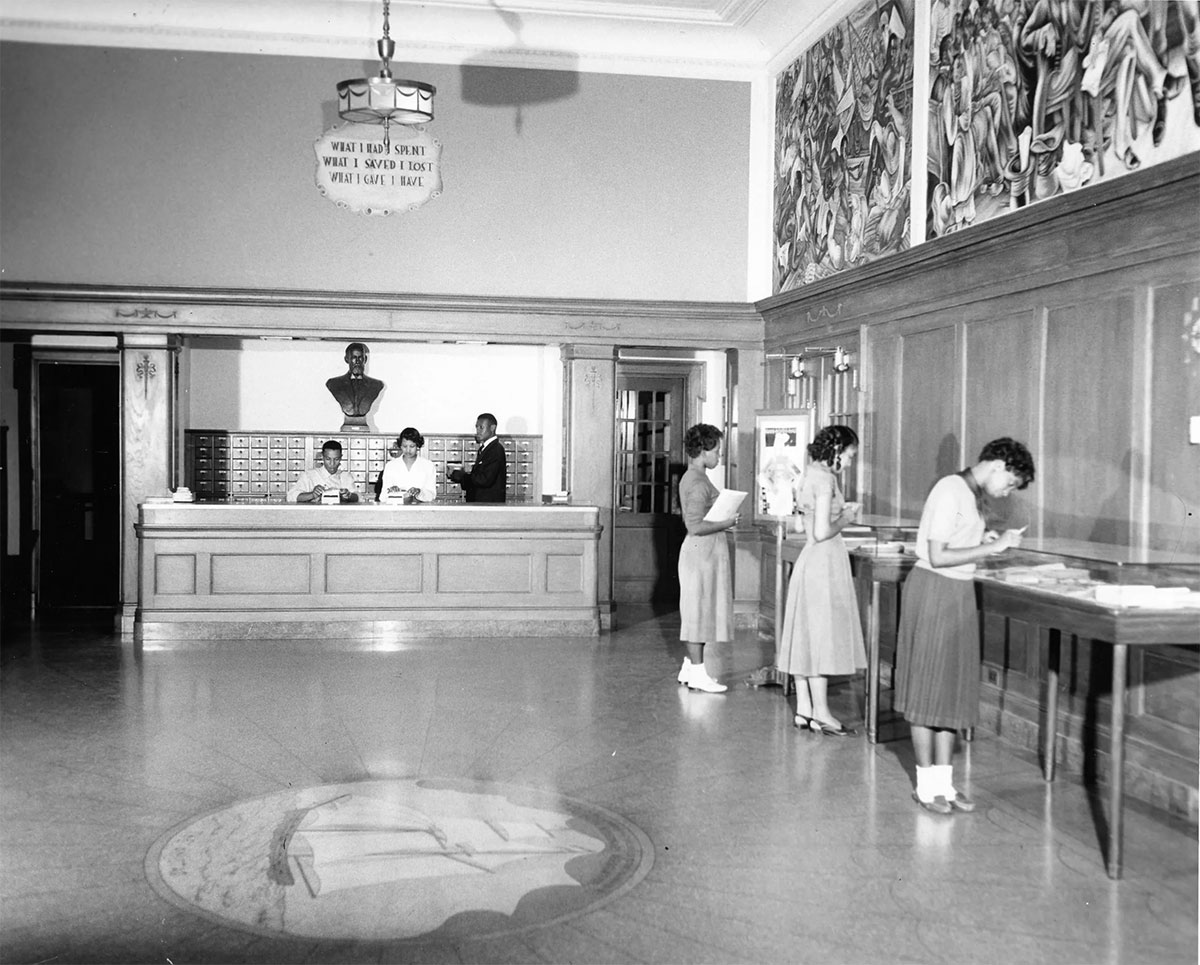 It was 1938, and racial tensions were high across Depression-era America. In one small Southern community, Talladega College President Buell G. Gallagher believed a new library on the College’s campus, for students and faculty as well as the citizens of the town of Talladega, could be a statement of "interracial harmony and intellectual advancement."
It was 1938, and racial tensions were high across Depression-era America. In one small Southern community, Talladega College President Buell G. Gallagher believed a new library on the College’s campus, for students and faculty as well as the citizens of the town of Talladega, could be a statement of "interracial harmony and intellectual advancement."
As plans for the library were made, Gallagher commissioned artist Hale Woodruff (1900-1980) to paint a series of murals for the lobby of the library. The three murals would depict the story of The Amistad, an event that occurred 100 years ago in history and was all but forgotten by 1938. The murals’ installation and the library’s inauguration at Talladega would occur on the anniversary of The Amistad.
Woodruff’s three Amistad murals re-imagined the theme of Black resistance for contemporary times. In bold, animated forms and evocative imagery, Woodruff began his series with the moment aboard ship when the kidnapped Africans turned on the ship’s crew. In the next mural, the Africans face their oppressors in the United States Supreme Court trial that resulted in their freedom. The final mural depicts the Africans accompanied by American missionaries as they land on the shores of Africa.
The Supreme Court decided in favor of the Africans, stating that they were free individuals. Kidnapped and transported illegally, they had never been slaves. Senior Justice Joseph Story wrote and read the decision: “...it was the ultimate right of all human beings in extreme cases to resist oppression, and to apply force against ruinous injustice.” The opinion asserted the Africans’ right to resist “unlawful” slavery. -- Source: The National Archives, The Amistad Case
A year later, Woodruff would be commissioned to paint a second set of three murals depicting key events in the founding of Talladega College. Together with the Amistad murals, Woodruff’s paintings would remain in Savery Library for more than 70 years until they were removed for conservation in 2011. After traveling to exhibitions at museums across the county, they returned to Talladega College where they were installed in the Dr. William R. Harvey Museum of Art in 2020.
Unauthorized commercial copying, redistribution, publication, or exploitation of the mural images is prohibited. For more information, refer to Terms of Use.
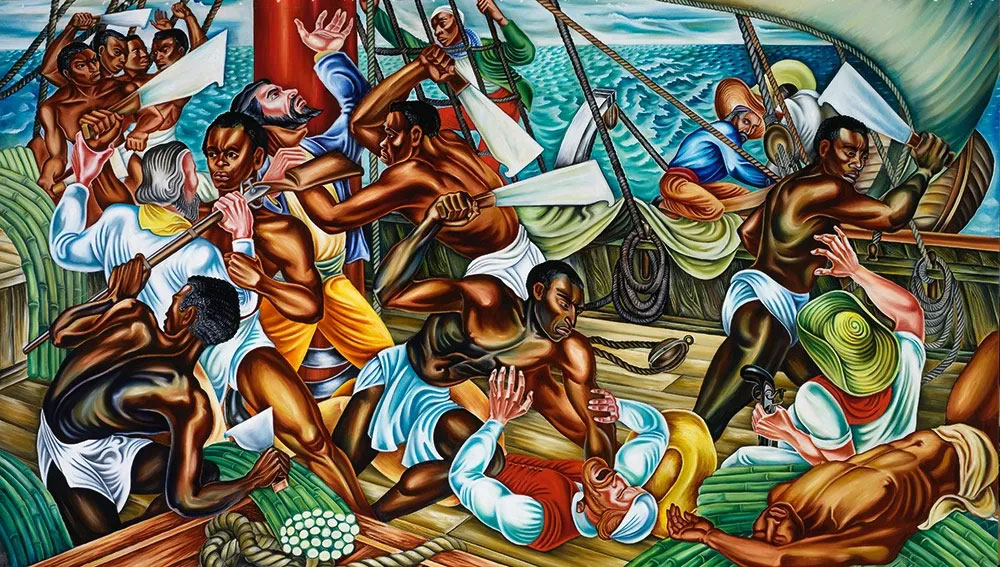
The Mutiny on the Amistad
The shipboard revolt depicts the moment the kidnapped Africans, in a desperate attempt to return to Africa, attack the crew with sugar cane knives.

The Trial of the Amistad Captives
The case of the Amistad was argued in the U.S. Supreme Court before Justice Joseph Story. He ruled that the Africans were free individuals, and had never been slaves.
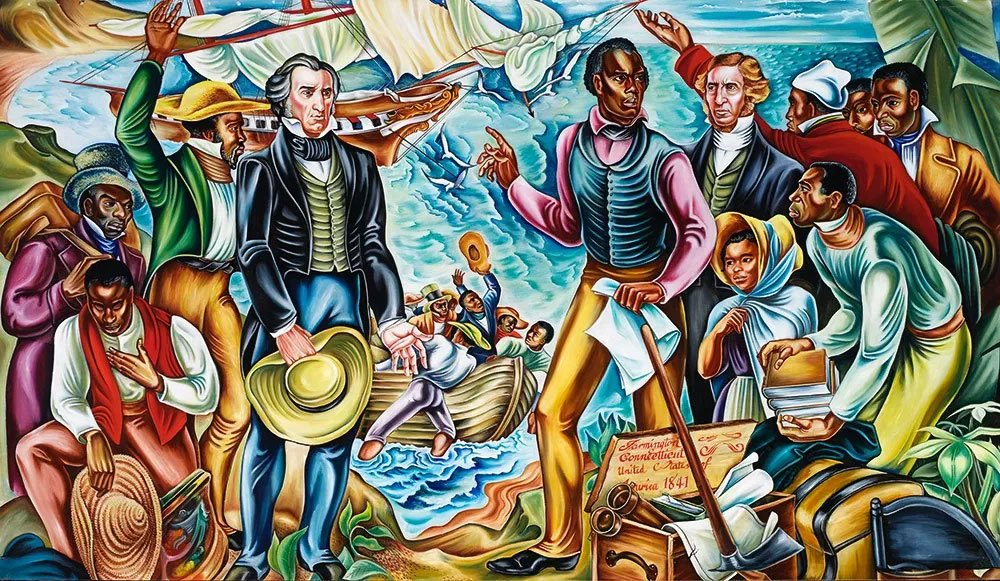
Repatriation of the Freed Captives
In the final mural, the freed Africans and missionaries with the American Missionary Association alight on the shores of Africa.
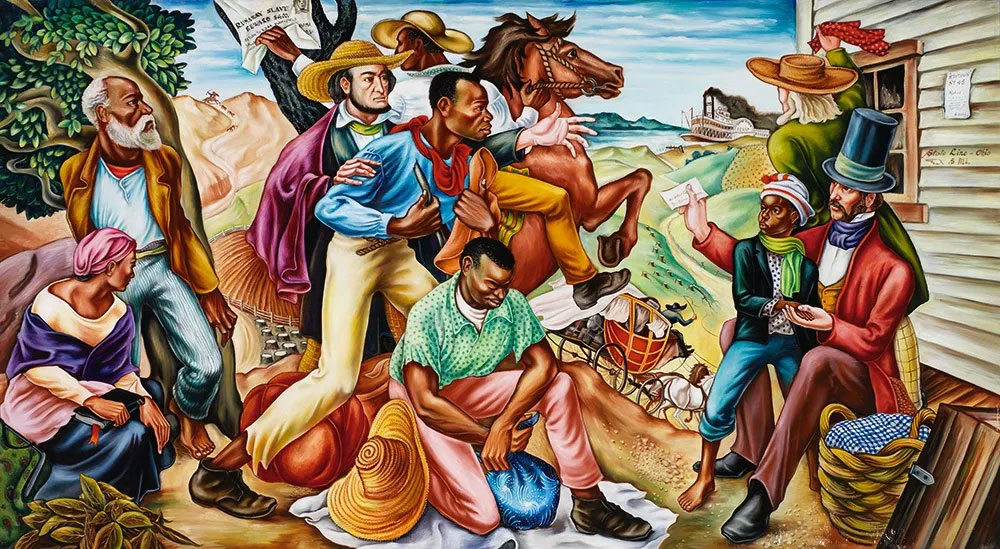
The Underground Railroad (1942)
In 19th century America, a network of secret roads and safe houses helped enslaved Africans escape to free states. In this mural, Woodruff depicts cooperation and encouragement between Blacks and Whites along a route of the Underground Railroad.

Opening Day at Talladega College (1942)
Tuition is paid with produce and livestock in this lively re-imagining of opening day at Talladega College. In the center and wearing a bright green waistcoat is William Savery, a former slave and one of the founders of the College.
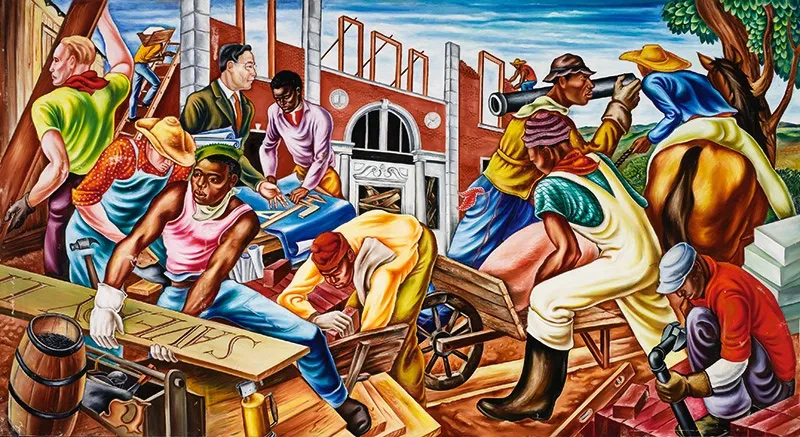
The Building of Savery Library (1942)
In stark contrast to the Mutiny on the Amistad mural, in the final mural of the Founding Series, an interracial team of men work together to construct the College's new library. Architect and Talladega College graduate Joseph Fletcher is pictured slightly to the left of the composition.